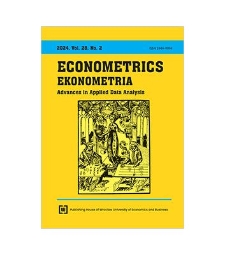Lower Silesian Digital Library contains 103 579 digital objects
Object
Title: Default Prediction Using the Cox Regression Model and Macroeconomic Conditions – A Lifetime Perspective
Title in english:
Creator:
Ptak-Chmielewska, Aneta ; Gonzalez, Juan Pablo Espinosa
Description:
Econometrics = Ekonometria, 2024, Vol. 28, No. 2, s. 50-61
Abstrakt:
Publisher:
Publishing House of Wroclaw University of Economics and Business
Place of publication:
Date:
Resource Type:
Resource Identifier:
doi:10.15611/eada.2024.2.04 ; oai:dbc.wroc.pl:127168
Language:
Relation:
Econometrics = Ekonometria, 2024, Vol. 28, No. 2
Rights:
Pewne prawa zastrzeżone na rzecz Autorów i Wydawcy
Access Rights:
Dla wszystkich zgodnie z licencją
License:
CC BY-SA 4.0
Location:
Group publication title:
Object collections:
- Lower Silesian Digital Library > Participants of the Consortium > 04. Wroclaw University of Economics > Periodicals published by the University Publishing House
- Lower Silesian Digital Library > Participants of the Consortium > 04. Wroclaw University of Economics > Periodicals published by the University Publishing House > Econometrics = Ekonometria. Advances in Applied Data Analysis
- Lower Silesian Digital Library > Resources > 2. Czasopisma > Czasopisma współczesne
Last modified:
Jul 25, 2024
In our library since:
Jul 24, 2024
Number of object content hits:
125
All available object's versions:
https://dbc.wroc.pl./publication/165814
Show description in RDF format:
Show description in OAI-PMH format:
| Edition name | Date |
|---|---|
| Default Prediction Using the Cox Regression Model and Macroeconomic Conditions – A Lifetime Perspective | Jul 25, 2024 |
Objects Similar
Ptak-Chmielewska, Aneta
Ptak-Chmielewska, Aneta
Ludwiczak, Bogdan
Ptak-Chmielewska, Aneta Matuszyk, Anna
Ptak-Chmielewska, Aneta Kuleta, Piotr
Mikulec, Artur Misztal, Małgorzata
























